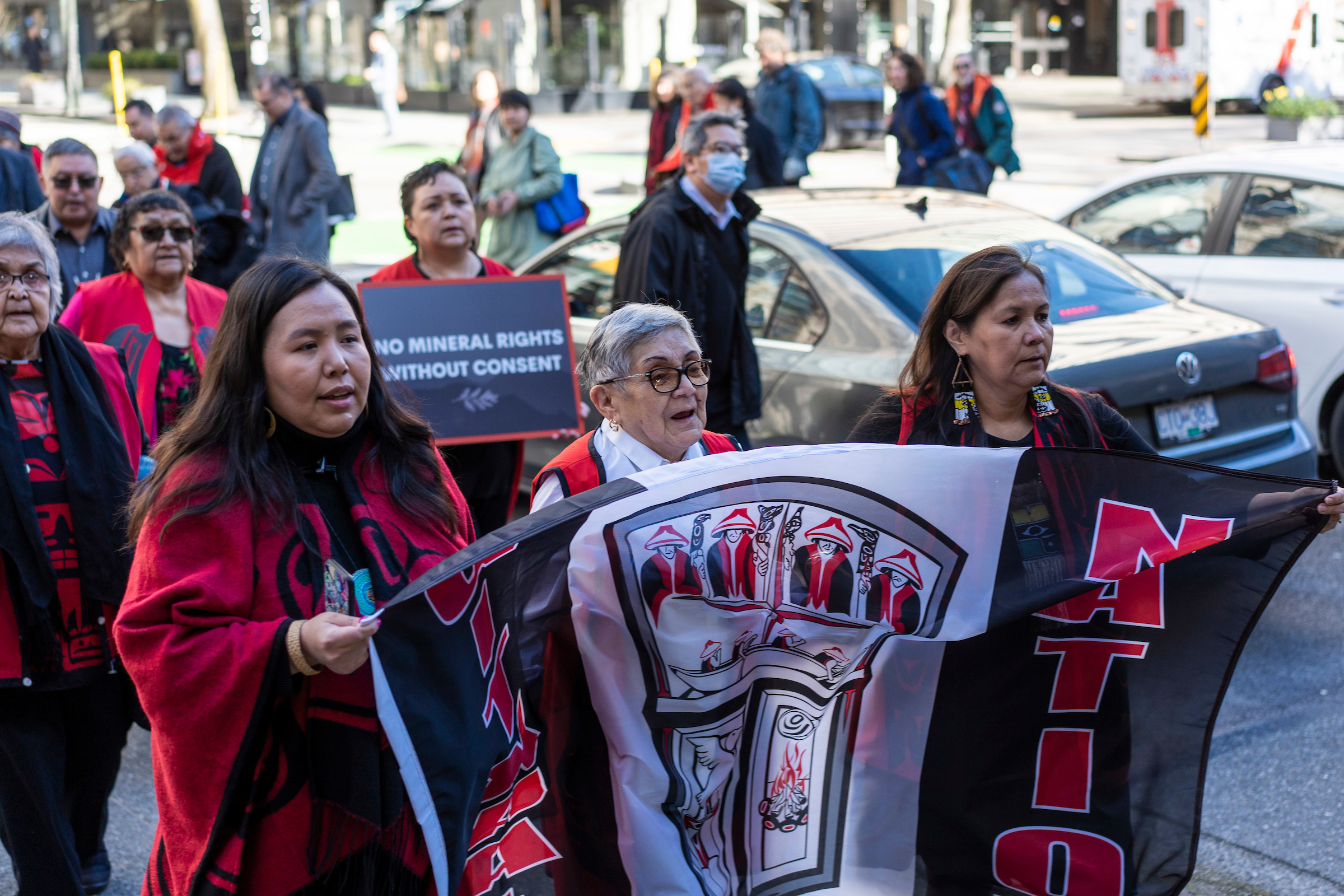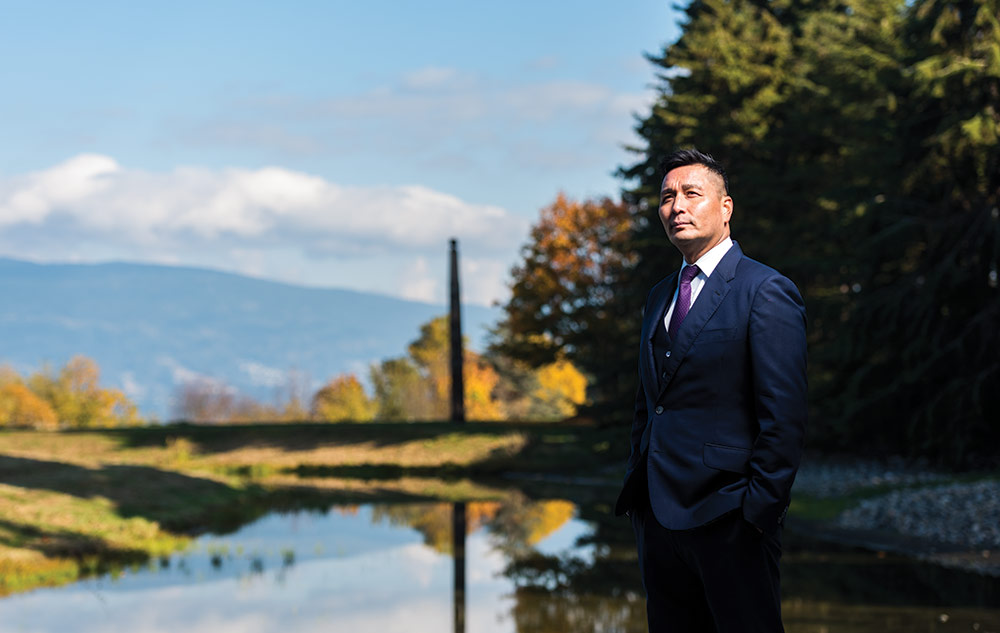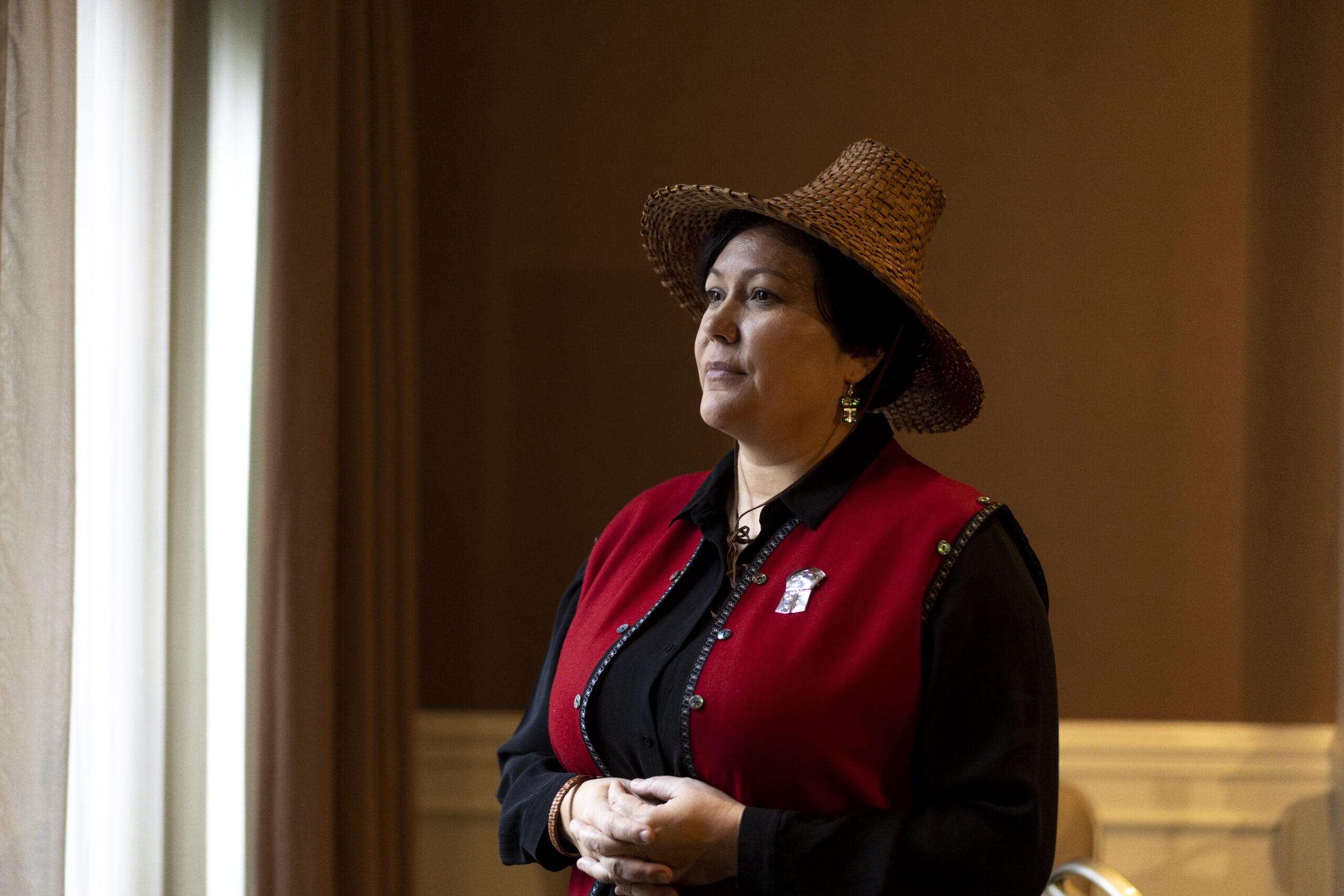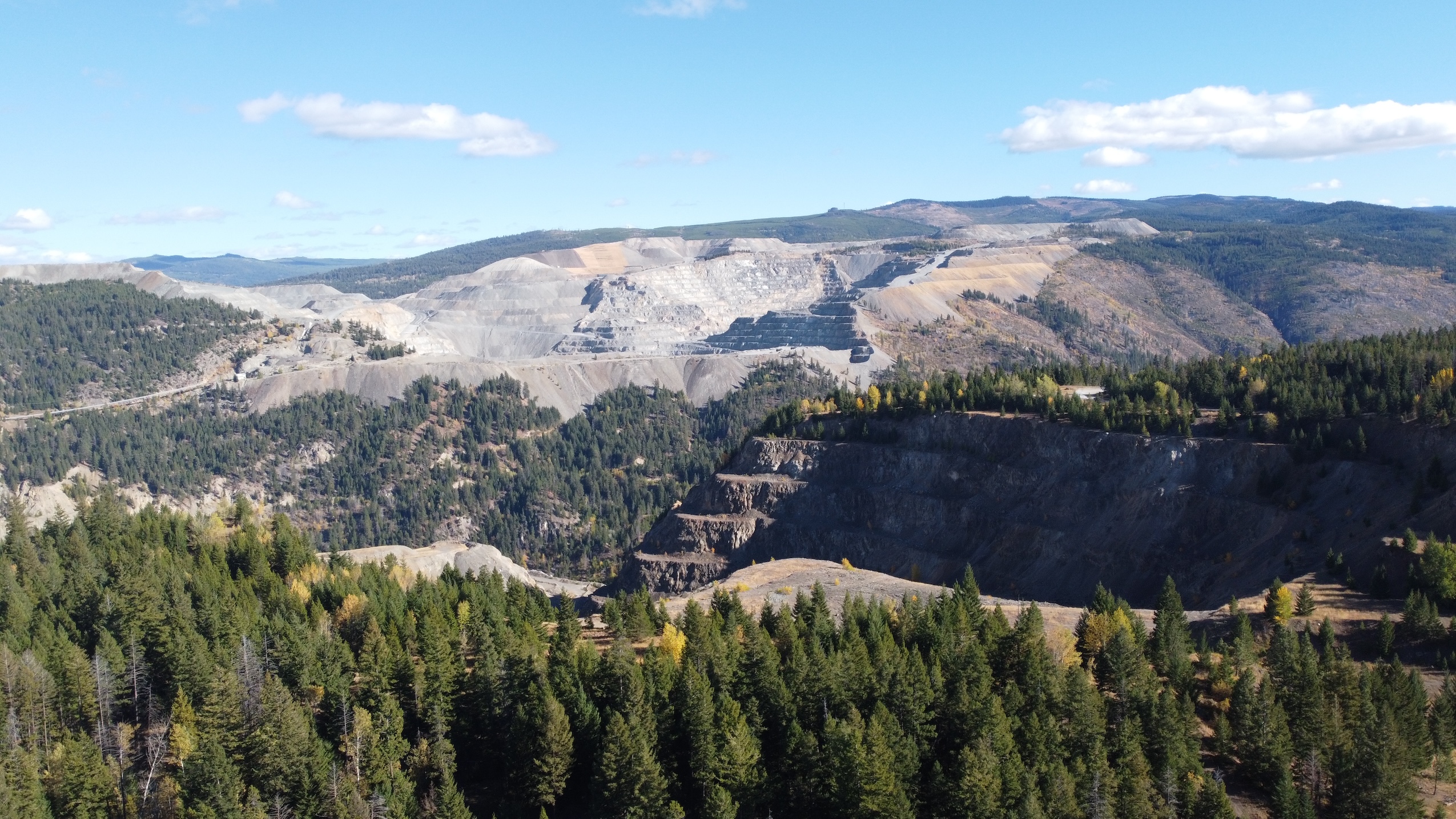
Danielle Smith says separation is about alienation. It’s really about oil
The Alberta premier’s separation rhetoric has been driven by the oil- and secession- focused Free...
Get the inside scoop on The Narwhal’s environment and climate reporting by signing up for our free newsletter.
British Columbia has a new framework for consulting First Nations about mineral claims — but critics say it’s flawed, will likely cause an influx of paperwork for First Nations and largely maintains the status quo.
The framework was implemented on Wednesday, following a landmark 2023 ruling from the B.C. Supreme Court in which the court agreed with Gitxaała Nation and Ehattesaht First Nation that B.C. breached its duty to consult with First Nations by issuing mineral claims without consultation.
Before the ruling, almost anyone could make a mineral claim online, gaining the mineral rights to a plot of land for a nominal fee, without consulting affected First Nations before undertaking mineral exploration work.
Under the new mineral claims consultation framework, provincial staff will handle consultations with First Nations after a staking application is received. B.C.’s chief gold commissioner will determine whether the province has met its duty to consult with First Nations, if the claim should be registered and if accommodations should be made.
Merle Alexander, a principle with Miller Titerle + Company who practices Indigenous resource law, said the new framework is similar to consultation processes in other industries — processes long problematic for many First Nations.
The framework is “a very bad first step in what is supposed to be a much greater mining regime reform project,” Alexander, who helped develop B.C.’s Declaration on the Rights of Indigenous Peoples Act, told The Narwhal.
“If they’ve come up with something so minimal, uninventive, more of a 20-years-ago consultation framework — what does that signal for the broader legal reform?” he asked.
In his 2023 ruling, B.C. Supreme Court Justice Alan Ross declined the nations’ request to void recent mineral claims in their territories and did not pause new mineral claims, which continued during the 18-month engagement process to create a new framework.
Alexander, in his work as counsel for the Assembly of First Nations, said the organization didn’t see the mineral claims consultation framework until this January, when it seemed too late to inform the process.

As part of their legal case, Gitxaała and Ehattesaht nations argued the court has a role in enforcing the application of B.C.’s Declaration on the Rights of Indigenous Peoples Act, which recognizes Indigenous jurisdiction. The court disagreed and the nations appealed. A decision is pending.
Alexander said the nations are pushing for more substantial reform beyond consultation about mineral staking claims — reform that recognizes Indigenous jurisdiction on a government-to-government basis. He worries the province won’t proceed beyond taking on the “low-hanging fruit,” will engage in only the “bare minimum” consultation and will stop short of its promises for larger reform to bring the Mineral Tenure Act into alignment with the declaration, which it said it will do by the fall of 2026.
He sees the result as “two steps forward, one step back” in recognizing Indigenous Rights.
Alexander also said B.C.’s push for deregulation to counter U.S. tariffs — including fast-tracking mining projects — is inconsistent with its declaration commitments.
“We’re supposed to be creating co-jurisdiction,” he said. With B.C. also eliminating environmental assessments for some energy projects and passing Bill 7, which allows the government to quickly respond to U.S. tariffs without approval from the legislature, “the opposite trend is happening,” he argued.
He called the push for deregulation “disheartening” and “deflating.”

Terry Teegee, regional chief of the B.C. Assembly of First Nations, expressed similar concerns about deregulation, saying it could flood under-resourced First Nations with referrals.
“Without meaningful changes, history has a habit of repeating itself, leading to continued costly legal disputes and hindering genuine reconciliation efforts,” Teegee wrote in a recent op-ed in the Vancouver Sun. “The framework risks perpetuating business-as-usual practices that exclude First Nations from critical decision-making processes.”
“Threats to our sovereignty by [U.S. President Donald] Trump and the United States must not force us backwards to old concepts of decision-making and governance,” Teegee continued. “The people of B.C. deserve a future that progresses forward to a more inclusive society.”
In a statement to The Narwhal, the Ministry of Mining and Critical Minerals said working with First Nations “is vital to ensuring the success of our economy.”
“From BC Hydro’s call for power projects to groundbreaking consent-based partnerships for major mines, First Nations are helping grow and diversify B.C.’s economy,” the ministry said. “Deepening partnerships with First Nations will help us respond to the challenges in front of us, including Trump’s unjustified tariffs.”
Alexander, a member of Tsimshian Nation and Kitasoo Xai’xais First Nation, worries the new framework will increase the number of referrals First Nations are expected to respond to — within 30 days — without giving them additional resources to handle the influx.
First Nations are already saturated with referrals they don’t have the capacity to respond to, he said.
During the government’s engagement with First Nations about the framework, it heard broad concerns about a lack of capacity to fully participate in the process. The government responded by saying it had “secured modest capacity funding.”
In a March 26 press release, Jagrup Brar, minister of mining and critical minerals, said the province is “ensuring we address our constitutional obligations, and bringing certainty to the earliest stages of the mineral exploration process. We will continue to monitor and improve the framework to ensure that it is straightforward, fair and results in timely decisions.”
According to Alexander, the engagement process for the framework was cut short and available information was limited.
“It’s a consultation framework and it didn’t even fulfill the duty to consult itself,” he said.

Naxginkw, or Tara Marsden, Wilp sustainability director for the Gitanyow Hereditary Chiefs, agreed, pointing out First Nations participation was minimal due to the B.C. election and other delays.
“If this was the result of a really robust process, we would be in the press release,” she said.
Marsden also worries about First Nations capacity to take on these referrals, calling the framework the “bare minimum” and saying she is “not hopeful” B.C. will make broader reforms to the Mineral Tenure Act as promised.
“It took this long and a court case to get these very modest changes,” she said.
She was frustrated the 2023 decision did not impact existing mineral tenures. The judgement acknowledged First Nations had been owed consultation but left them in the same position — a “real contradiction,” she said.
She said Gitanyow is still pushing to develop its own government-to-government process on how tenures are established.
Ruben Tillman with the law firm Ng Ariss Fong, which represented Gitxaała, called the framework “extremely disappointing,” saying it is not in line with the court decision. He also said there are thousands of claims each year, and First Nations are being given a short time to assess them.
“Then if the First Nation manages to respond within that tight window, the Crown assesses whether to accommodate any concerns. This isn’t meaningful consultation,” he said.
He said he would have liked to see the province create a policy in line with the Declaration on the Rights of Indigenous Peoples that included free, prior and informed consent for First Nations and “self-government and management of their own territories.”
“Instead, this does appear to be a bare minimum framework that doesn’t even adequately account for the real impacts of mineral claims that Justice Ross found,” he said.
The Association for Mineral Exploration also criticized the engagement process and the new framework.
“The government has only meaningfully engaged with industry in recent months,” Trish Jacques, board chair of the association, said in a statement. “This has limited our association’s ability to provide prudent feedback on some complex issues, although some progress has been made.” The association is concerned applicant names will be made public and also about the lack of firm permitting timelines.
“[The] Association of Mineral Exploration does not endorse the final version of the framework as there are serious issues that have not been addressed,” Jacques said in the statement.
Nikki Skuce, director of the non-profit Northern Confluence and co-chair of the group BC Mining Law Reform, told The Narwhal the framework only applies to initial claims, and a claim holder can still then apply for a mineral lease without consultation and the chief gold commissioner is obligated to grant it (consultation does happen later for permits). A lease then lasts 30 years.

“For over a century, the mineral exploration sector has been favoured within a colonial system that has given it privileged rights and access to land. It is long overdue to bring the sector into line with other values and limits,” Skuce said.
Marsden said B.C. is trying to “walk that middle line” and “nobody’s satisfied at this point.” She wants the government to remain committed to the Declaration on the Rights of Indigenous Peoples in the face of pushback.
“Either abandon your principles and you abandon what you committed to, or you tell industry, ‘This is a new world and you have to adapt,’ ” she said.
“There are a lot of people within government and industry very open to creating solutions,” she added.
“Dismantling [the Mineral Tenure Act] should be part of our collective narrative — we are changing, we can keep the industry alive and respect the original landowners of this province.”
In the 2023 legal case, the province argued the declaration act is a commitment to reconciliation and does not implement the United Nations Declaration on the Rights of Indigenous Peoples into provincial law. In his written decision, Ross, the B.C. Supreme Court justice, agreed, which is what the nations are appealing.
But the declaration act affirms the province’s commitment to bring laws — including the Mineral Tenure Act — into alignment with the declaration, which recognizes Indigenous jurisdiction.
As the province reiterates those promises, the nations are asking if it makes any difference if the declaration act is not enforceable in court.
In a January press release, Gitxaała Nation points to Section 3 of the declaration act which says: “In consultation and co-operation with the Indigenous Peoples in British Columbia, the government must take all measures necessary to ensure the laws of British Columbia are consistent with the declaration.”
Any inconsistency “imposes a legal duty on B.C. to consult and cooperate about measures to address the inconsistency,” the nation argues.
“B.C. fought against its own law in the lower court, leaving us little choice but to appeal,” chief councillor Linda Innes said in a statement in January. “This case will decide whether the Declaration on the Rights of Indigenous Peoples is legally enforceable or merely another political promise that B.C. may or may not fulfill.”
Get the inside scoop on The Narwhal’s environment and climate reporting by signing up for our free newsletter. On a warm September evening nearly 15...
Continue reading
The Alberta premier’s separation rhetoric has been driven by the oil- and secession- focused Free...

Canada’s first-ever Indigenous governor general doesn’t play favourites among our majestic natural wonders, but she...

In Alberta, a massive open-pit coal mine near Jasper National Park is hoping to expand...
